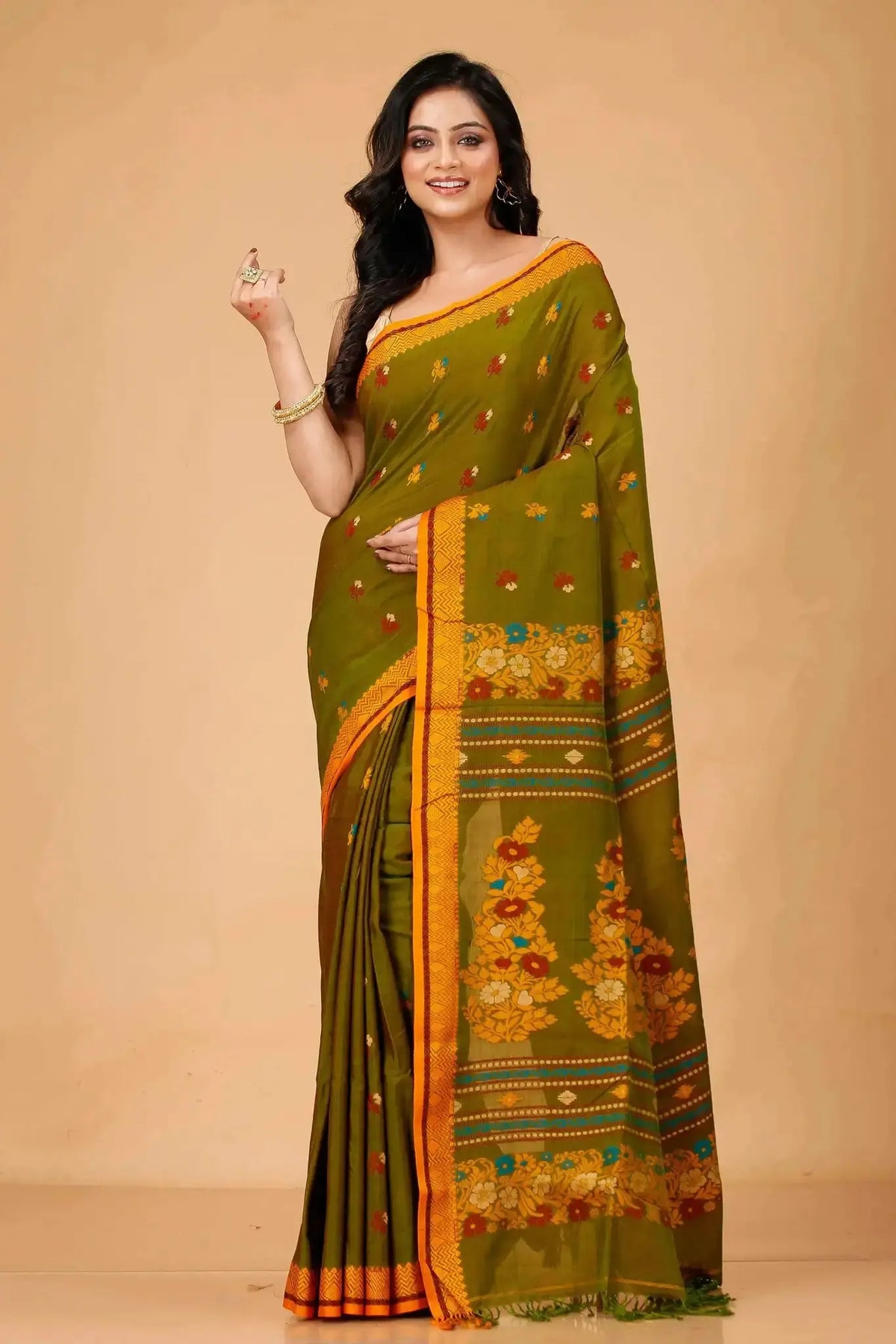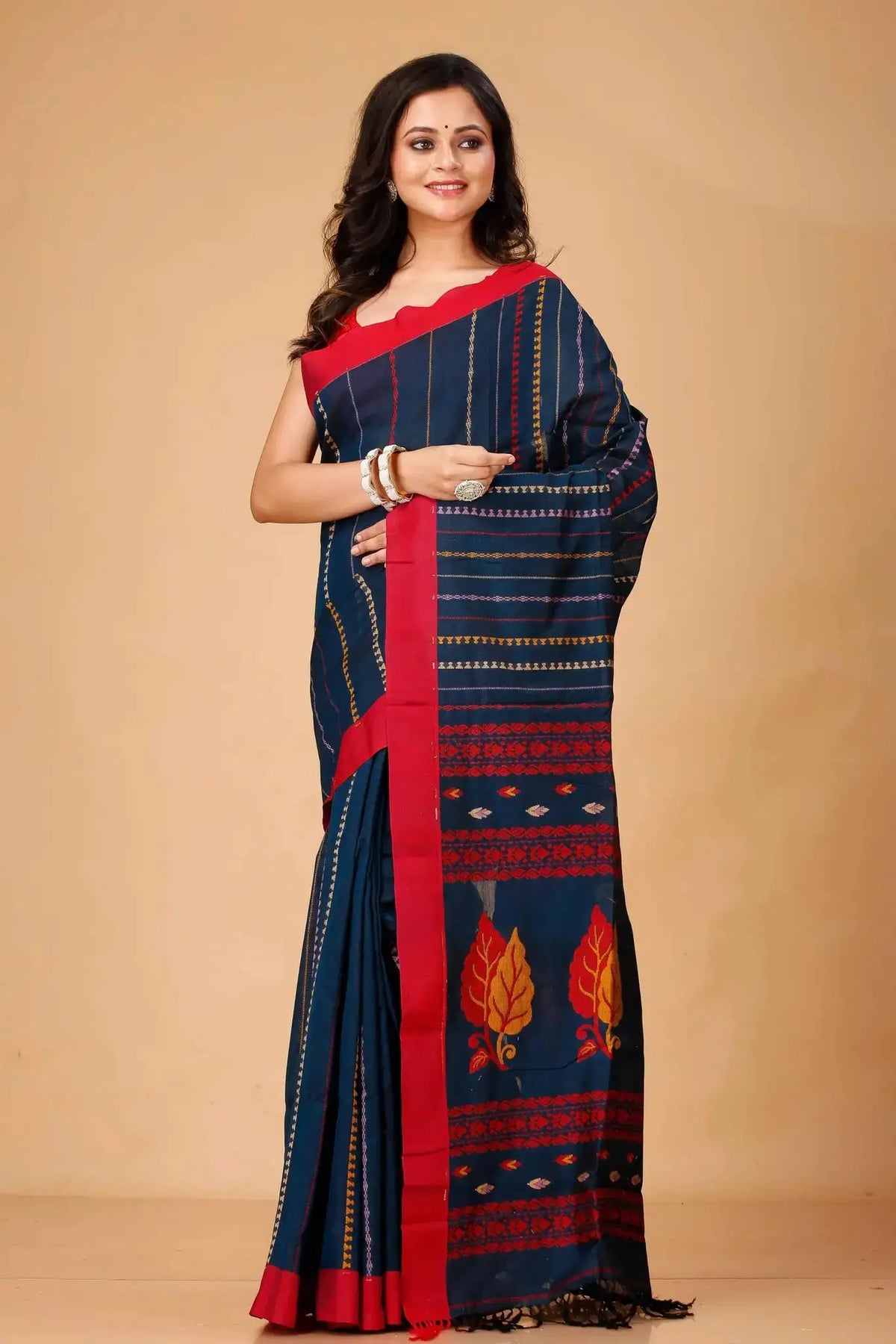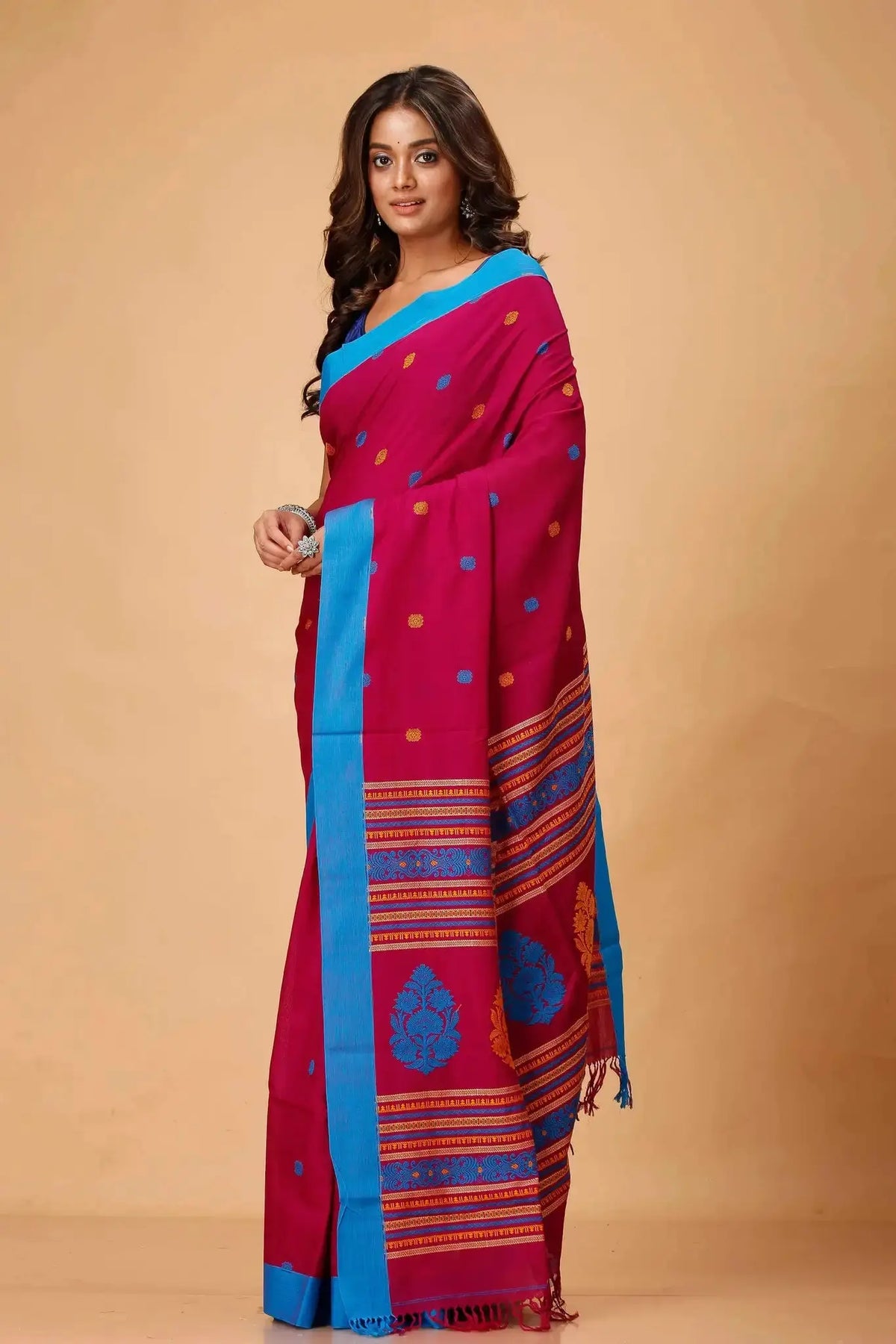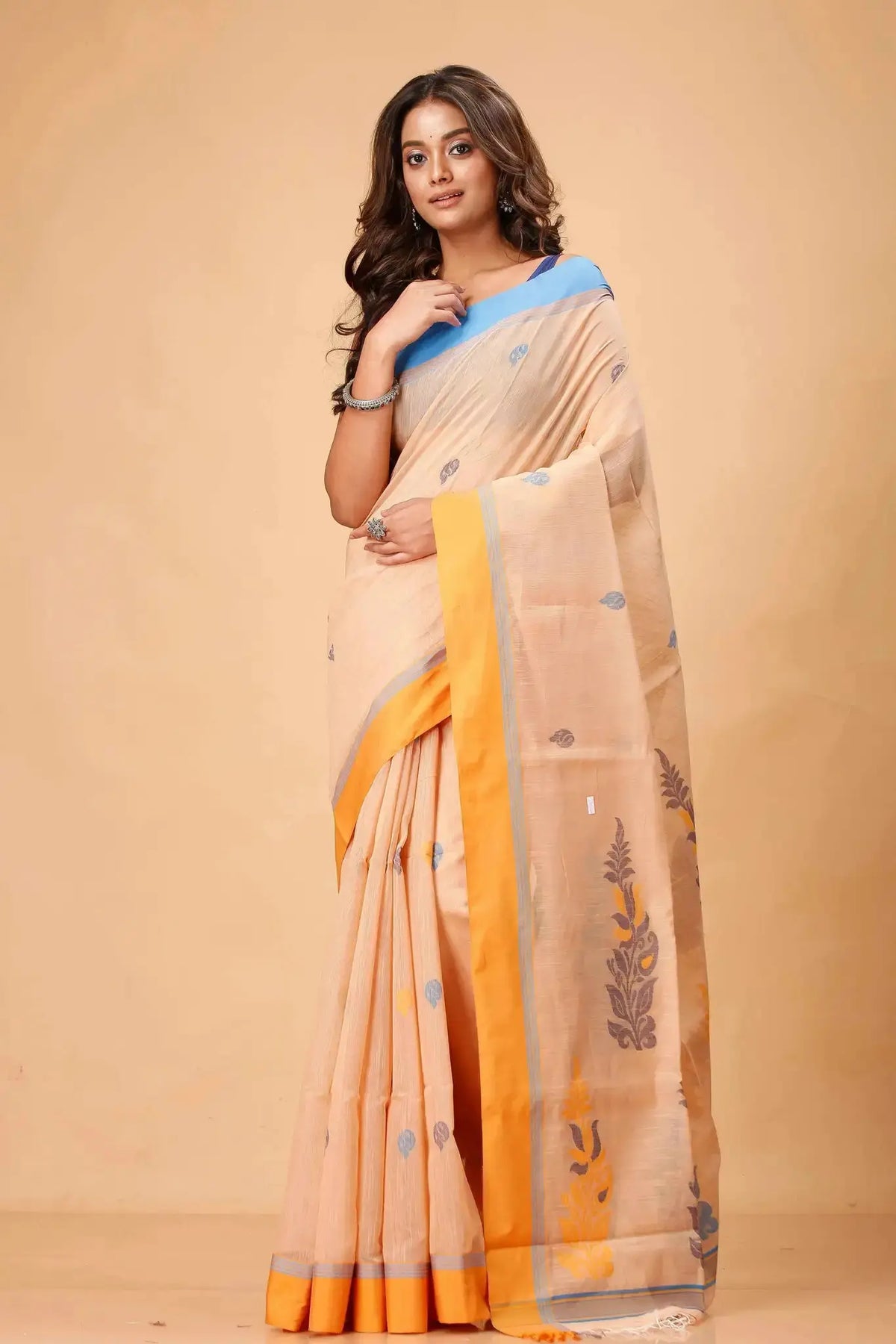South Indian sarees are a mesmerizing blend of culture, tradition, and artistry woven meticulously with threads of elegance. The allure of these sarees lies in their vibrant colors, intricate designs, and the rich heritage they represent. Among the various types of sarees, those made of 100% cotton hold a special place for their unmatched comfort and timeless appeal. Today, we delve into the world of 100% cotton South Indian sarees and explore their unique charm.
The Origin and Legacy of South Indian Sarees
South India is a region steeped in history and tradition, and its fashion is no exception. The sarees from this part of India reflect a rich tapestry of cultural narratives passed down through generations. The art of weaving has been a part of South Indian heritage for centuries, each saree telling its own story of lineage and craftsmanship. The region is renowned for several distinctive styles and techniques, including Kanjeevaram, Chettinad, and more, often made in pure cotton that is both breathable and elegant.
The Allure of 100% Cotton Sarees
The primary attraction of 100% cotton sarees is their comfort and versatility. Cotton, being a natural fiber, is perfect for the tropical climate of South India. It allows the skin to breathe and absorbs moisture, making it an ideal fabric for daily wear and festive occasions alike. Additionally, cotton sarees drape beautifully, accommodating varied body types and allowing for graceful movement.
Why Choose Cotton?
- Breathability: The airy texture of cotton provides unmatched comfort, making it ideal for both warm and moderate climates.
- Durability: Cotton fibers are strong and withstand the wear and tear of regular usage, ensuring longevity.
- Versatility: From casual to semi-formal occasions, cotton sarees can be styled and accessorized to suit diverse settings.
- Eco-Friendly: As a natural fiber, cotton is biodegradable and a sustainable choice compared to synthetic alternatives.
Traditional Weaving Techniques
The charm of South Indian cotton sarees is greatly attributed to their traditional weaving techniques, which vary across different regions. Each technique imparts a unique character to the saree.
Bengal Handloom and Jamdani
The Bengal handloom is a tapestry of excellence in the weaving industry. Known for its intricate patterns and vibrant colors, Bengal handloom cotton sarees are truly works of art. Jamdani, a unique weaving style from West Bengal, is characterized by its ornamental motif work. The motifs are often geometric in design, lending the saree an elegant and sophisticated look.
Some notable examples of Bengal handloom sarees include:
- Mango- Bengal Handloom Cotton Traditional Tant Saree
- Light Peach- Pure Cotton Bengal Handloom Saree With Traditional Motifs Blue Border
- Rose Gold- Bengal Handloom Cotton Tant Saree With Traditional Motifs
Tant Cotton Sarees
Tant sarees are an iconic representation of Bengal's weaving culture. They are typically light and airy, making them a comfortable choice for the humid climate. The characteristic borders and decorative pallu make them stand out. Here are some exquisite options:
- Golden- Bengal Handloom Traditional Tant Cotton Saree
- Chocolate Brown - Bengal Handloom Traditional Cotton Saree
- Cadillac Pink- Traditional Floral & Geometric Motifs Pure Cotton Bengal Handloom Saree
Manipuri Cotton Sarees
Manipuri cotton sarees are known for their distinct weaves and vibrant hues. They typically feature a play of bold colors and traditional motifs, making them stand out at any gathering.
- Elegant Black & Green Manipuri Cotton Saree With Blue & Mustard Woven Border
- Green & Red- Traditional Motifs Graceful Handwoven Manipuri Cotton Saree
- Grey Manipuri Cotton Saree With Forest Green Border Woven Pallu
Styling Cotton Sarees
While cotton sarees are an epitome of comfort, their simplicity is their greatest asset when it comes to styling. Here are some tips to enhance the elegance of your cotton saree:
- Accessorize Appropriately: Pair your cotton saree with traditional jewelry such as terracotta or oxidized silver to complement its earthy tones.
- Blouse Choices: Choose contrasting or matching blouses with intricate embroidery to add a modern twist.
- Footwear: Opt for ethnic footwear like juttis or mojaris to complete the traditional look.
- Draping Styles: Experiment with different draping styles such as the Bengali or Ulta Pallu to give a fresh look to your saree.
Preserving the Beauty of Cotton Sarees
Proper care and maintenance prolong the life of cotton sarees while preserving their vibrancy and texture.
- Washing: Hand wash in cold water using mild detergents to prevent color bleeding and maintain the saree's structure.
- Drying: Always dry in shade to avoid fabric discoloration.
- Ironing: Iron on medium heat to avoid fabric damage. Using a steam iron can help in smoothing out wrinkles.
Conclusion
100% cotton South Indian sarees are a testament to the region's rich cultural legacy and skilled craftsmanship. Whether it's a simple affair or an elaborate ceremony, these sarees offer a blend of traditional charm and modern elegance, suitable for any occasion. For those who appreciate sustainable fashion that carries a story of heritage, the cotton saree is a cherished addition to any wardrobe. Explore the exquisite collection and bring home a piece of this beautiful legacy here.
For more information and to explore more collections, visit Grivana.







